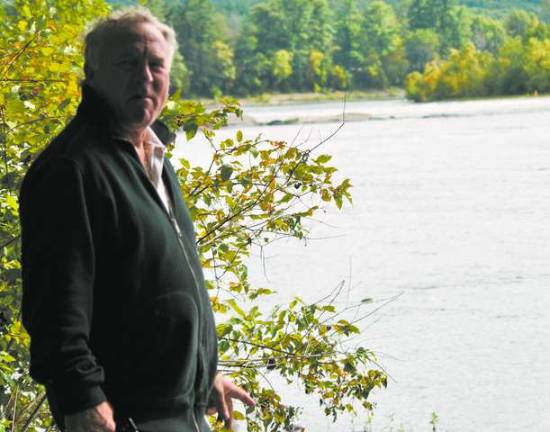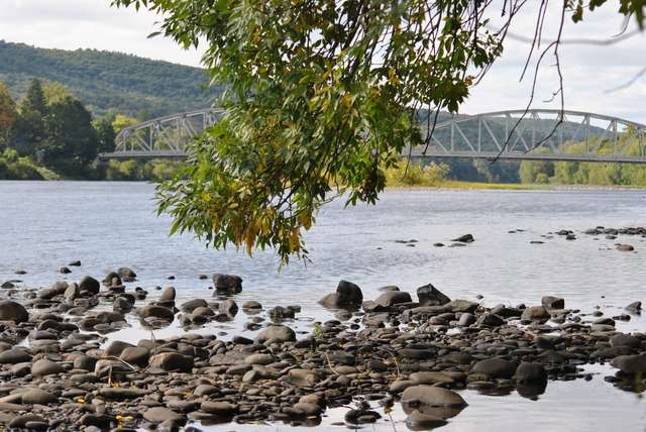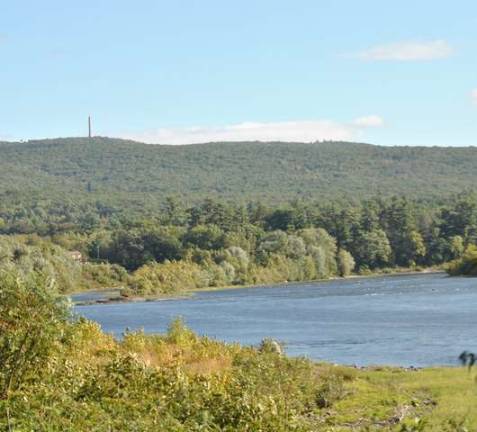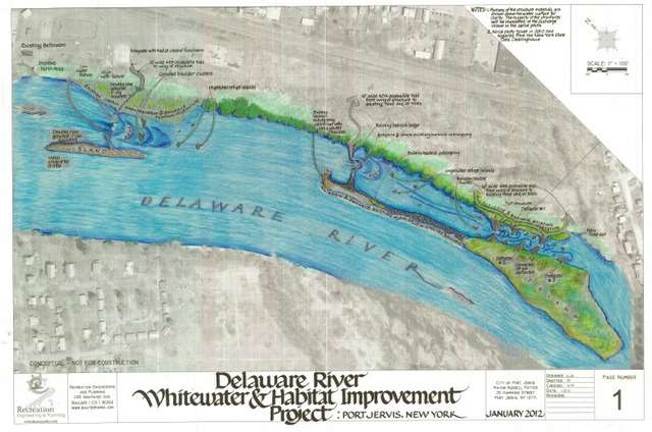Whitewater park may be coming to the Delaware River




By Anya Tikka
PORT JERVIS — When Port Jervis asked for suggestions about how to revitalize its river front, Adam Hubbard, a local teacher, suggested a whitewater park — something with a proven track record in other parts of the country that could bring millions of dollars in commerce to the area.
“It brings in people to town who have an easy access to the river, parking, town, shopping, food, and places to stay,” Hubbard told The Courier. He noted that the area is already famous for whitewater kayaking.
So, what would be different? Anyone can go on their own now to paddle — or to watch or to play — on the short stretch of calm river on the city's western border. Kayakers can travel back and forth with their equipment without the portage usually required on fast-moving stretches.
“It’s a natural feature built on the river based on what’s already there, but enhancing it and making it easier to access,” Hubbard explained. "It would create 'whitewater' with pools, rapids, and natural rock terracing."
Many people envision a theme park, but this is not the case. The suggested park would join the existing Riverside Park, and would not charge fees. It would provide areas along the Delaware for sitting, sunbathing, or running. On the river itself people can go swimming and fishing, in addition to kayaking, canoeing, surfing, boogie boarding, and rafting.
Planners: Park would be economic boom
The suggestion was accepted, and in 2012, the Orange County Industrial Development Agency agreed to back studies and surveys. The Orange County Planning Department found that the park would bring $10.0 million to $33.6 million each year to the area, with more than 150,000 jobs created.
A committee was formed to look into the project. The new Port Jervis mayor, Kelly Decker, is backing it.
“The city is hoping to generate additional revenue from the tourists it expects to come to visit," he said. "Local area businesses will benefit, and taxes benefit the town and the whole area.”
Originally, the park was going to span approximately a half-mile of river starting with the first of the small islands close to the bridge and ending at rock formations downriver. But the idea suffered a setback. Decker said the environmental study found endangered mussel species listed by the Federal and State Endangered list.
"We had to forgo the upper section, and are focusing on the lower section," Decker said. "If we can show the lower section is helping to rehabilitate the mussels’ habitat, the upper, quarter of a mile long stretch can also be opened at a later stage. They’ve shown in other places it will be a great habitat in a couple of years."
Although the park size had to be trimmed, Hubbard said the remaining length is enough to accommodate both the expert kayaker and the novice.
“It’s not about length — it’s the water features that matter,” he said. “One wave feature would be enough to lure a lot of kayakers there, from beginner to expert, and for competitions, all in the same area of the park. A wave feature is a water drop into a deep pool making a two- to three-foot-high ocean wave where you can surf, boogie-board, or kayak.”
He compared the activity to biking.
“Like a biker, it’s the same road, but an expert would be doing wheelies while a beginner is learning to ride,” he said. “The Olympic slalom course in London is about 800 yards long.”
Decker said the city is now working on permits.
“Within a year, we hope to have got through enough for the committee to start formal review," he said. The price tag is about the $4 million.
“The committee is trying to get corporate sponsorship," he said. "The government is unable to provide spending funds. If the project goes ahead, a city referendum would take place."
Decker said the park would have a pavilion area and parking. It will not be just a water park, he said, but a family park where people may enjoy trails and sitting areas to walk, relax, or have a picnic.